If you’re a SaaS founder, you’re probably obsessed with your metrics.
SaaS metrics are essential for founders as they provide valuable insights into user acquisition, retention rates, engagement levels, and other data points necessary for using resources most effectively.
In this article, we’ve compiled the 15 most important SaaS metrics every successful software business should be tracking. We’ll explore each one in more detail to explain how to calculate each and why these measurements are critical for understanding customer behavior within SaaS businesses today.
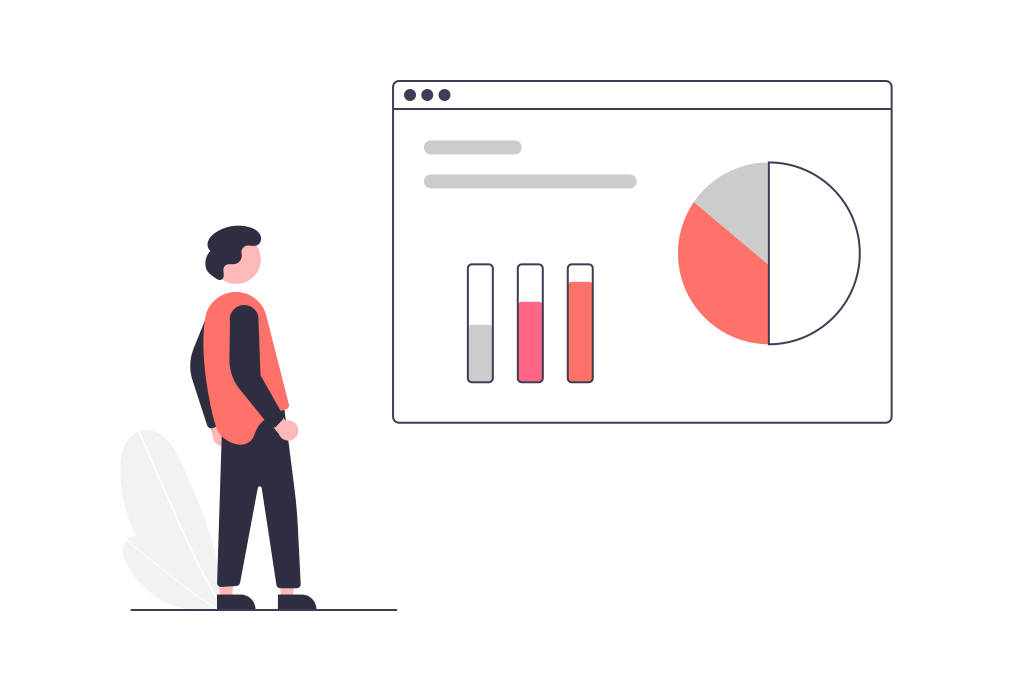
SaaS (Software-as-a-Service) metrics are a set of measurements used to assess the health and performance of businesses providing software services.
These metrics provide key insights into customer acquisition, user engagement, revenue growth, customer retention, cost efficiency and more. They are essential for founders and business owners as they can be used to make informed decisions about product development, marketing strategies, operational costs and other areas of the business.
These metrics can be categorized into four major categories:
By leveraging SaaS metrics you gain valuable insight into your product’s performance which allows you to make better decisions related to product development and marketing strategies in order to maximize profits and growth potential.

Of the 15 important metrics to be tracked, we’re going to list the top five SaaS key metrics first.
It’s better to know all of your metrics, but you definitely need to know these.
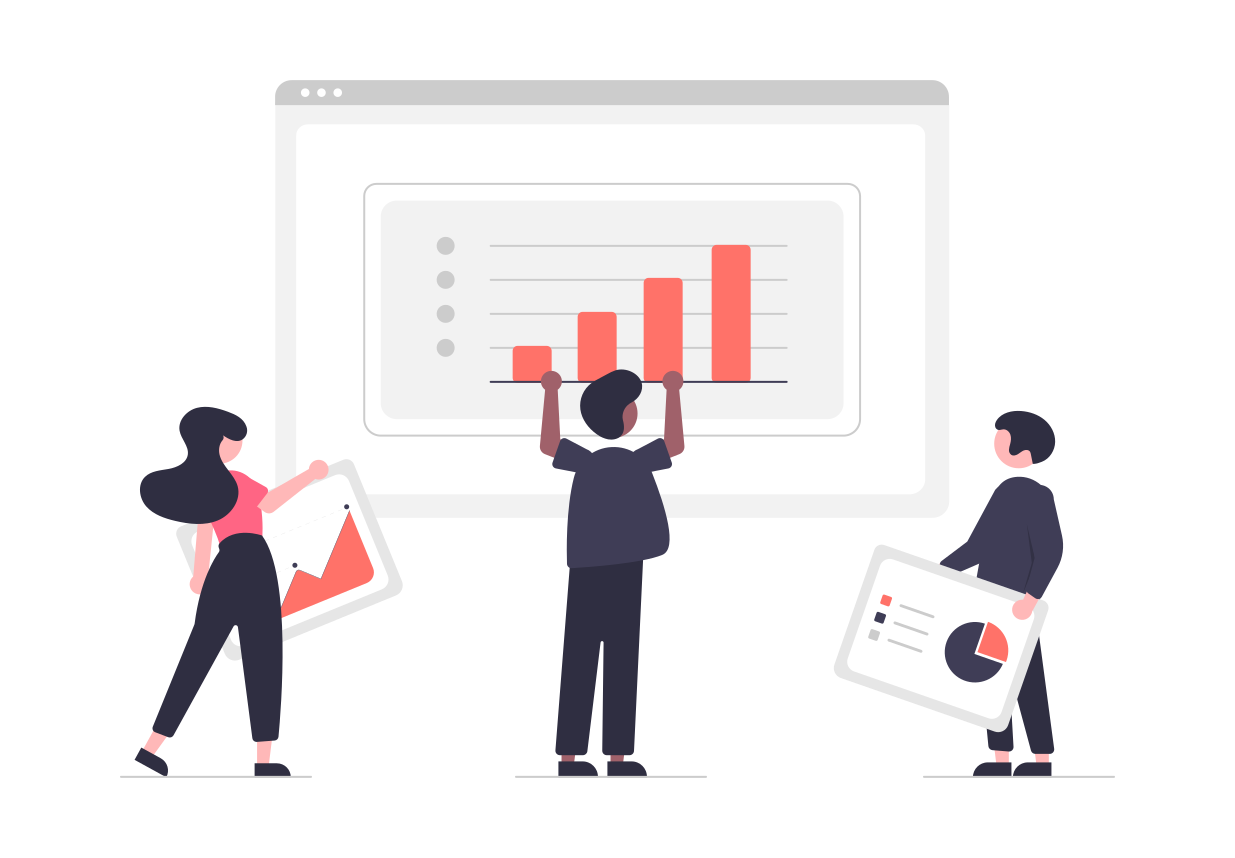
Other than the top 5 metrics listed above, there are 10 other metrics to consider to hone your SaaS business. The better you know these metrics, the better you know your business. This makes it easier to identify weaknesses, double down on what is working, and communicate to investors.
Here are the 15 metrics we think every SaaS company should be tracking.
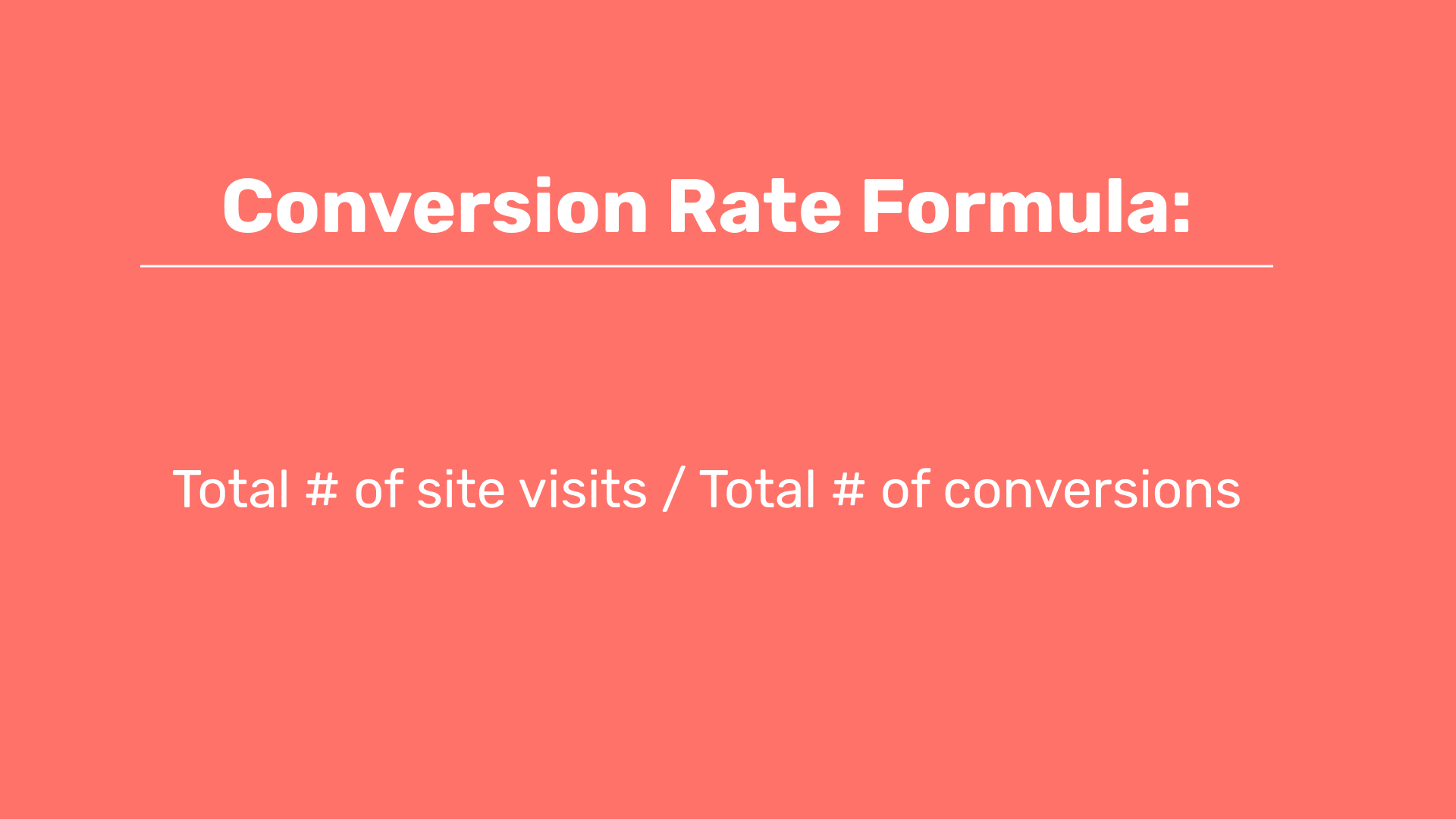
Conversion rate is a SaaS metric that tracks the percentage of customers or prospects who take a desired action on your website, app, or other platforms. This could be anything from signing up for an account to making a purchase, subscribing to a newsletter, downloading an ebook, filling out a survey, etc. It is a key performance metric.
Divide the total number of conversions (or desired actions taken) by the total number of visits or impressions to the platform.
Knowing the conversion rate is important because it allows SaaS companies to measure the effectiveness of their marketing and sales strategies. It can help them identify which campaigns are most effective at driving conversions, how successful each channel is in delivering conversions, and what variables influence customer decisions.
Additionally, understanding the conversion rate can help businesses understand where they are losing customers, such as slow website loading or website navigation that isn’t user-friendly.
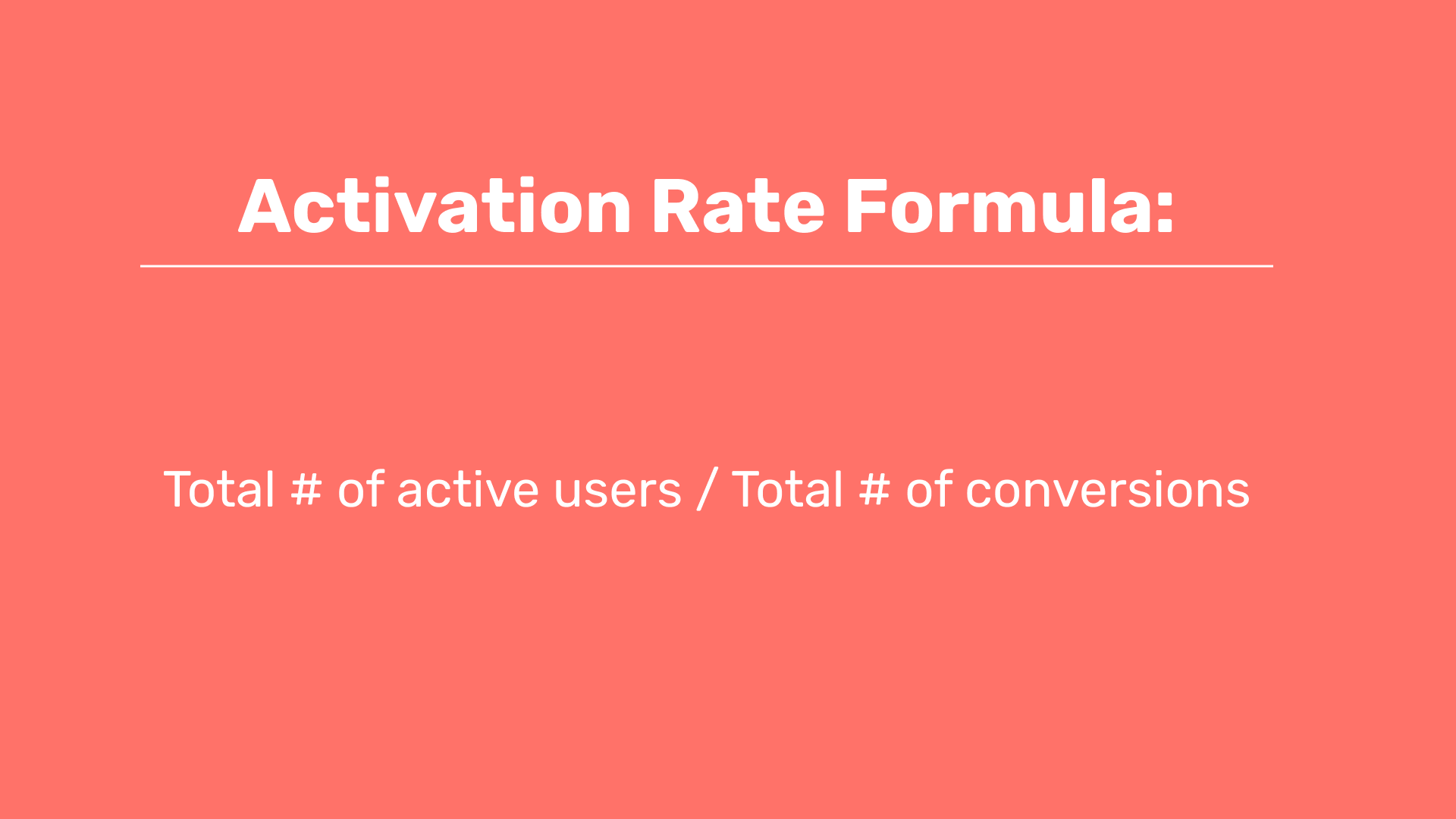
Activation rate is a SaaS metric that measures the number of customers who make meaningful use of a product or service. It tracks the number of users who take an action that indicates they are beginning to engage with the product, such as signing up for an account, creating a profile, or making their first purchase.
Divide the total number of customers who are actively using your product or service by the total number of customers or users.
The activation rate is an important metric for understanding customer engagement and satisfaction levels. Low activation rates can indicate that the product isn’t user-friendly and that customers aren’t finding value. High activation rates indicate that customers are receiving value from the product or service, which can lead to higher customer lifetime values and loyalty.
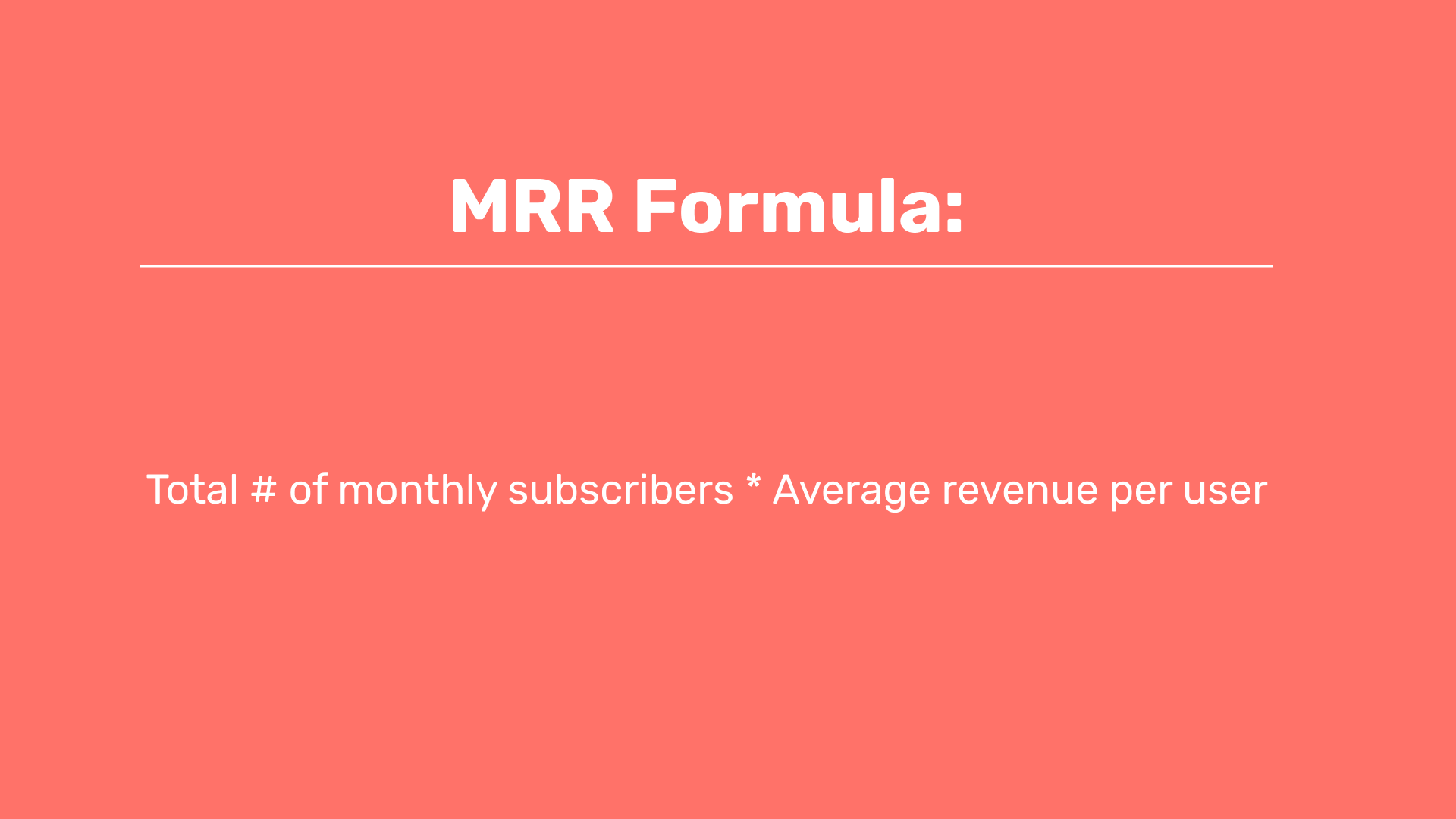
Monthly Recurring Revenue (MRR) measures the total amount of revenue generated from recurring subscriptions over a given period. It is a key performance indicator for understanding the overall health of a SaaS company, as it provides insights into retention rates, customer lifetime values, and other important metrics.
Monthly Recurring Revenue (MRR) is calculated by adding up all the revenue generated from recurring subscriptions in a given month. This includes subscription renewals, upsells, and any other revenue generated from existing customers. MRR excludes one-time fees or non-recurring sales.
MRR is a key metric for SaaS companies because it provides insight into the company’s overall financial health and customer retention rates. It can also help businesses identify which products or services are most in demand and which channels are driving the most recurring sales. Additionally, tracking MRR allows SaaS businesses to forecast their future cash flow.
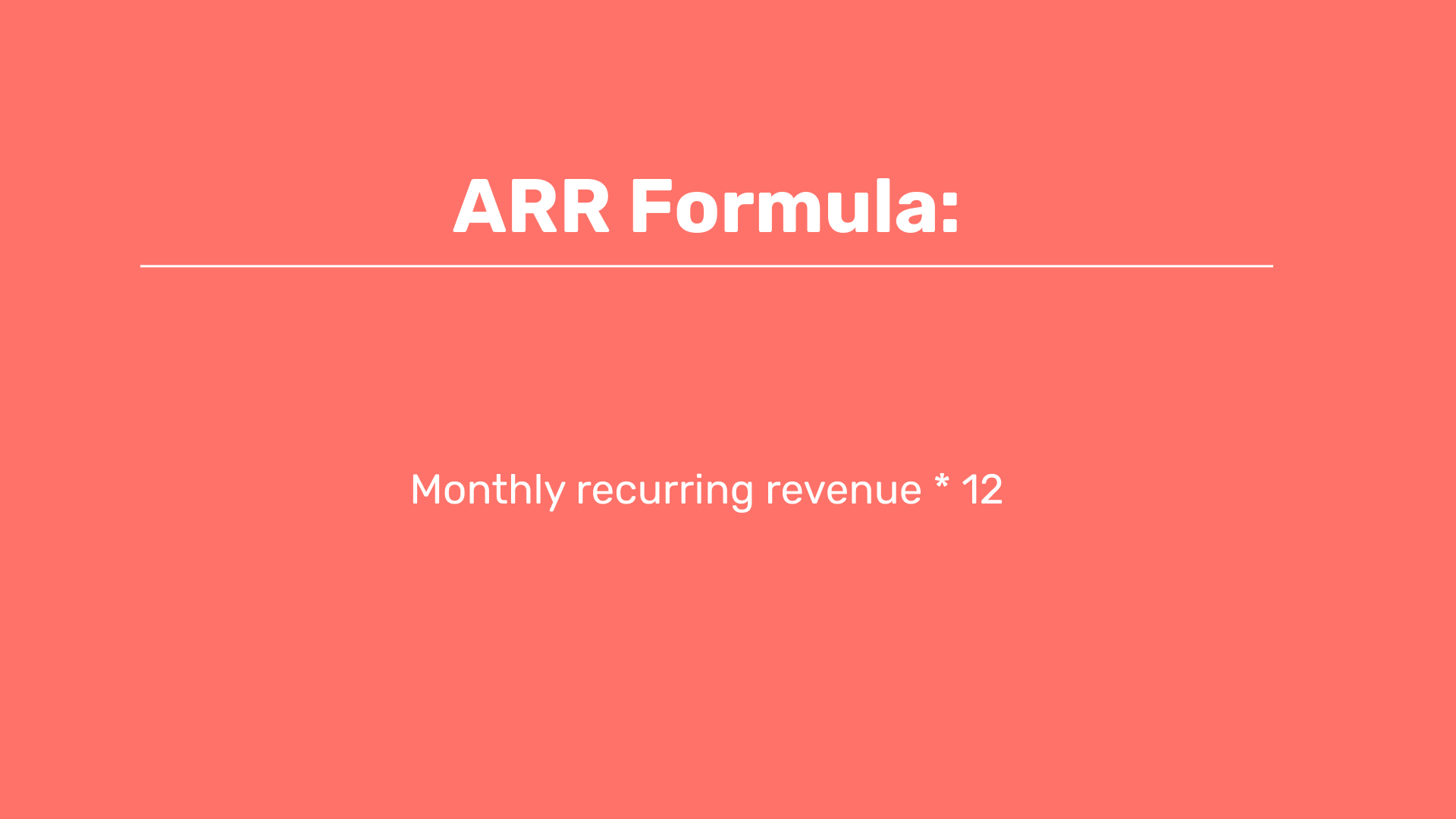
Annual Recurring Revenue (ARR) is a SaaS metric that measures the amount of money you will receive from customers every year, based on their subscription. It shows how much money your SaaS business can expect to get every year from customers who keep renewing their subscriptions.
ARR is calculated by multiplying the MRR (Monthly Recurring Revenue) by 12.
Annual recurring revenue is a key metric for software businesses because it allows them to predict future revenue and forecast customer lifetime values over time. It also provides insight into the retention rate of their customers, as well as which products or services are most in demand. Additionally, understanding ARR helps businesses identify trends in customer behavior and decide what strategies they should implement to maximize sales and profitability.
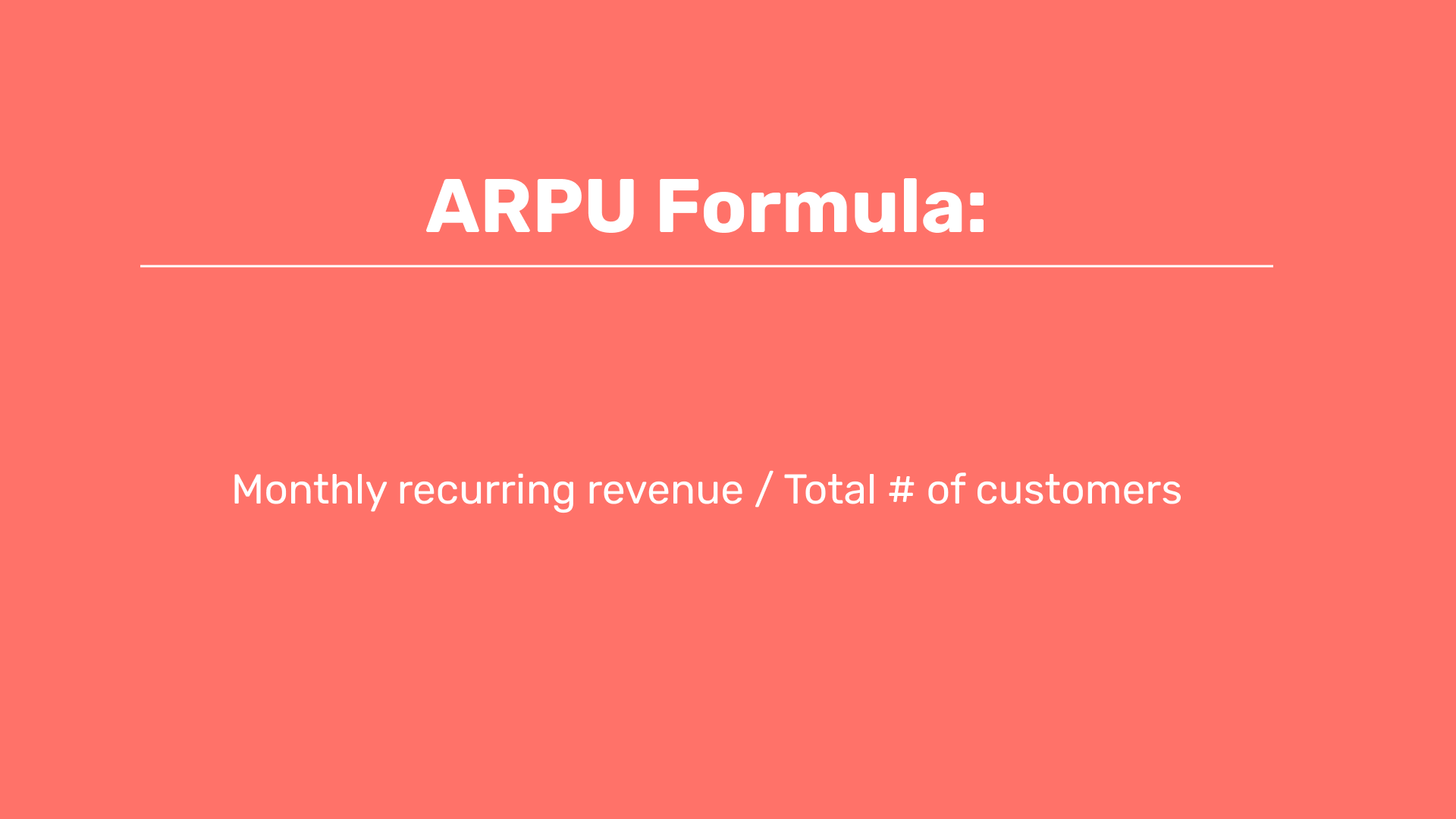
Average revenue per user (ARPU) is a SaaS metric that tracks the average revenue generated from each customer account over a specific period. ARPU can provide insight into how many customers a company needs to reach certain revenue milestones.
It is calculated by dividing the total revenue earned from all customers over a given period by the number of customer accounts.
This metric helps businesses understand if they are getting enough value from each customer account. It can also be used to identify which products and services are most in demand and which are driving the most revenue. Understanding ARPU also allows businesses to forecast their future growth potential and develop more effective marketing strategies.

Number of active users (NAU) is another of the key SaaS metrics that measures the total number of users who are actively engaging with a product or service. It tracks the daily, weekly, and monthly usage of an application to determine how many customers are using the product regularly.
Add up the total number of users who have engaged with the product over a given period.
Tracking NAU can help businesses identify any gaps in user engagement and understand which features are most popular. It can provide an accurate representation of the number of customers using a product or service regularly which can help businesses identify any gaps in user engagement and understand which features are most popular.
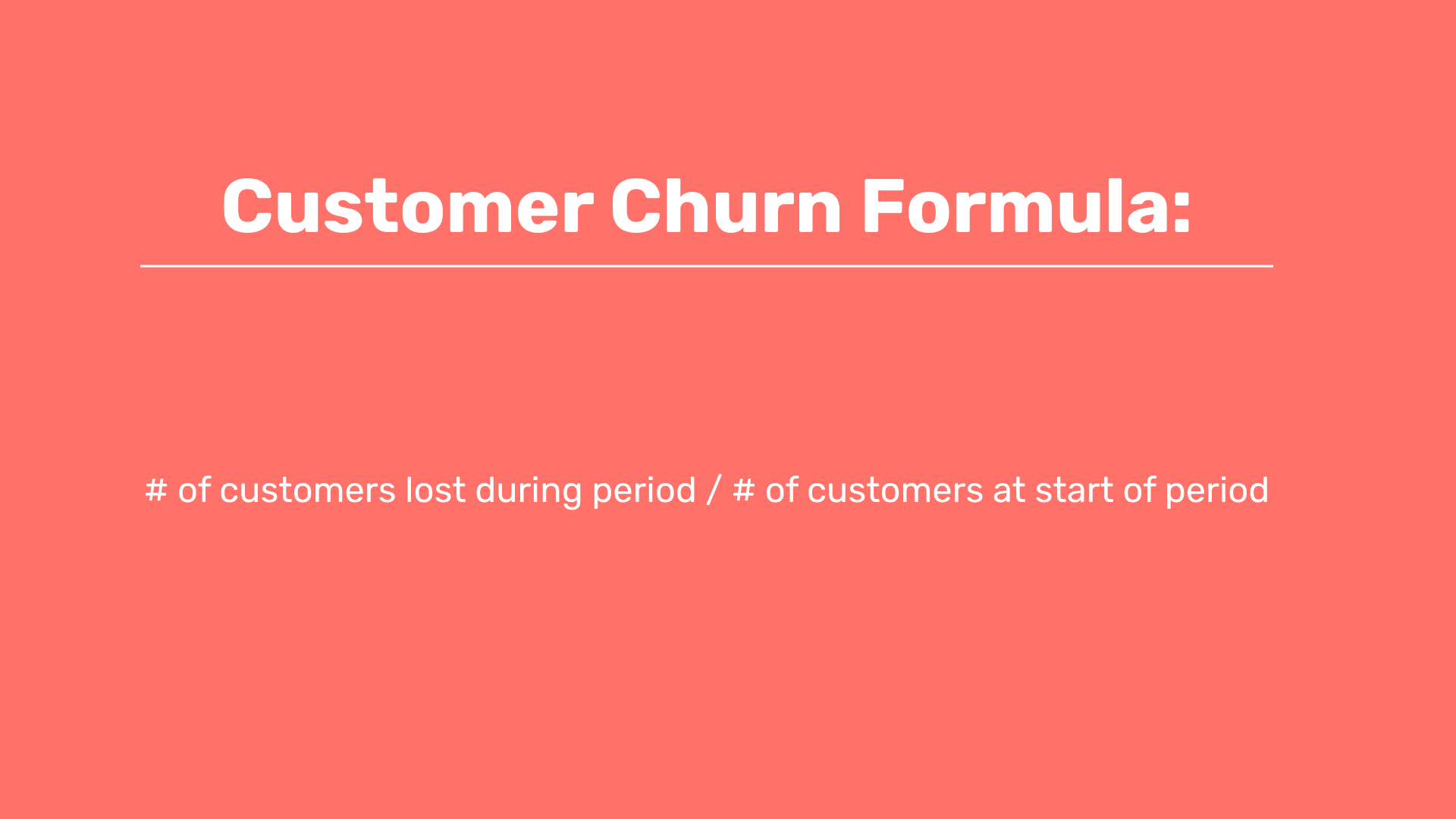
Customer churn is a SaaS metric that measures the rate at which customers are canceling their subscriptions or otherwise leaving a company’s services. It measures the number of customers who leave over some time and can be used to identify customer retention issues and identify areas for improvement.
Calculate the customer churn rate by dividing the number of customers that canceled within a given period by the total number of customers at the beginning of that period. This will give you a percentage indicating your customer churn rate for that period.
Customer churn is an essential metric for SaaS companies as it provides insight into customer retention rates and overall satisfaction levels with products or services. The customer churn rate can help businesses identify areas where they need to improve to retain customers.
By understanding the reasons why customers are leaving, businesses can develop more effective strategies for increasing customer loyalty and satisfaction. Tracking customer churn also allows businesses to forecast their future cash flow and better plan their long-term growth strategy.
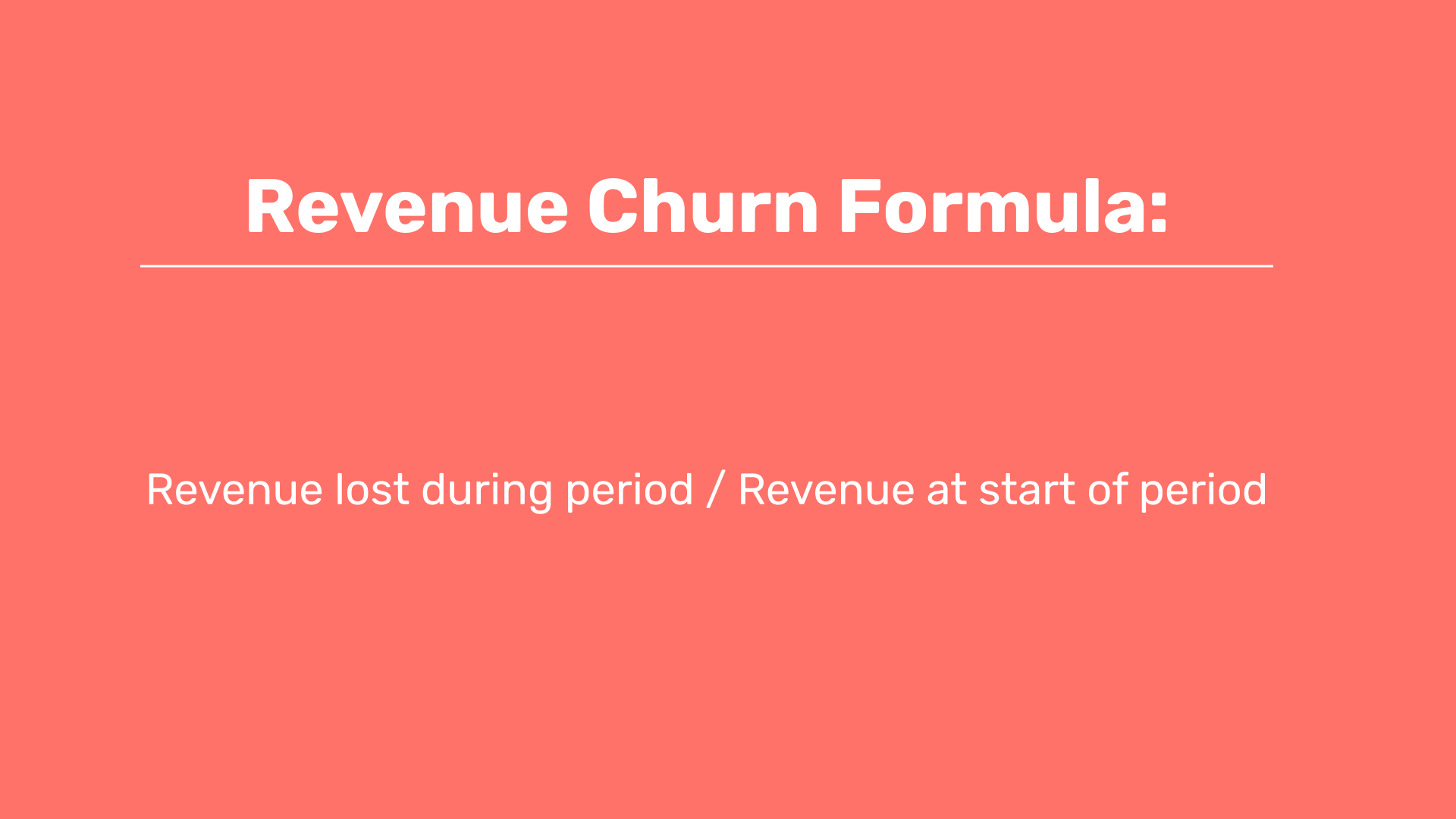
Revenue churn is a SaaS metric that measures the rate at which customers are canceling their subscriptions or otherwise reducing their spending. It measures the amount of revenue lost due to cancellations or downgrades over some time and can be used to identify customer retention issues and identify areas for improvement.
Calculate the revenue churn rate by dividing the total amount of revenue lost due to cancellations or downgrades within a given period by the total amount of revenue at the beginning of that period. This will give you a percentage indicating your revenue churn rate for that period.
Revenue churn is an important metric for SaaS companies because it provides insight into the customer experience and reveals any issues with retention. By understanding the revenue churn rate, businesses can identify areas within their product or services that may need improvement and develop more effective strategies to retain customers. Knowing this metric gives businesses the ability to forecast how much revenue they can expect in the future.
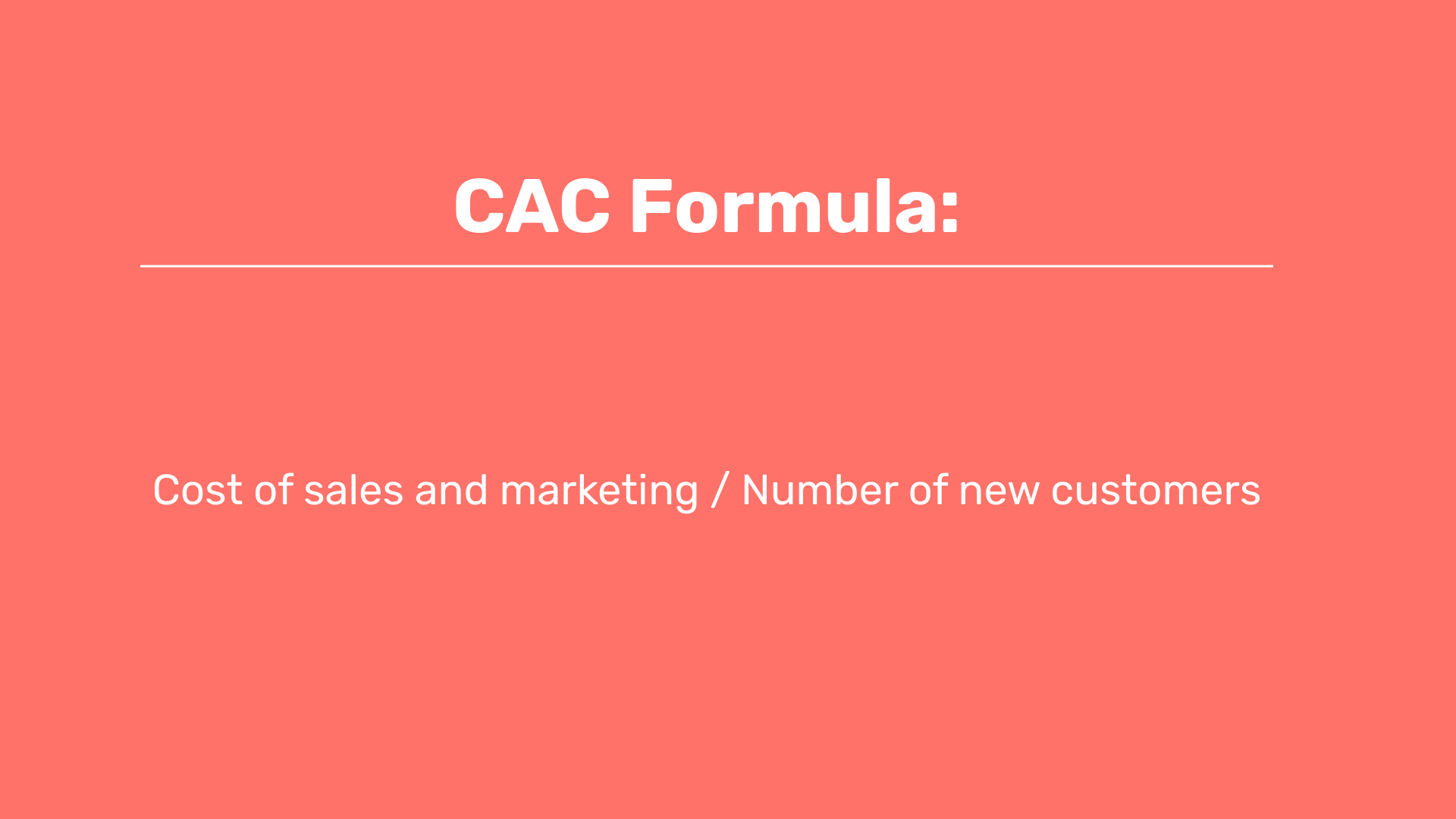
This metric measures the amount of money and resources it takes to acquire new customers. It tracks the total cost, including marketing spend, staff time, and other associated costs, to acquire one customer. CAC costs can help businesses understand their marketing and sales process and identify areas for improvement.
CAC is calculated by taking the total cost of sales and marketing efforts over a given period, such as one month or one year, and dividing that by the number of new customers acquired in that same period. This will give you the total CAC for that period.
Knowing the CAC metric gives businesses a better understanding of their sales and marketing efforts, as well as how successful they are at acquiring new customers. Tracking CAC allows businesses to analyze which channels and campaigns are the most effective in terms of cost versus the number of customers acquired. This information can then be used to improve their marketing and sales effort.
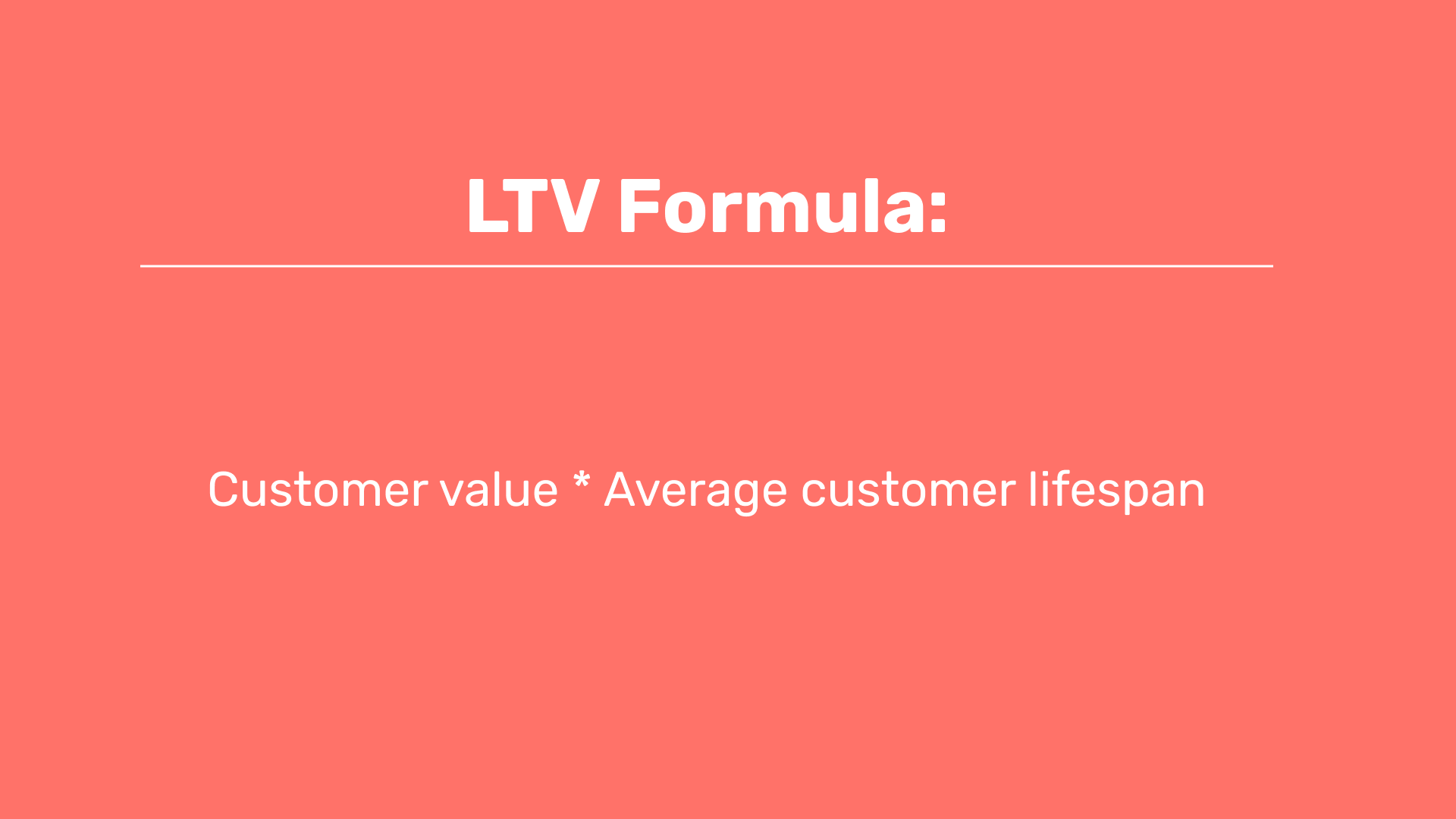
Customer Lifetime Value (CLV or LTV) is a SaaS metric that measures the total amount of profit that a customer will generate throughout their lifetime with your business. It takes into account factors such as the average revenue per user (ARPU), customer lifetime duration, and cost of customer acquisition.
To calculate the customer lifetime value, take the total expected revenue from a customer over their lifetime minus the cost of acquiring that customer. This calculation takes into account factors such as average revenue per user (ARPU), customer lifetime duration, and cost of customer acquisition.
Measuring CLV is one of the key SaaS metrics that helps businesses understand the value of their customer base. Tracking CLV reveals the cost-effectiveness of marketing campaigns and allows businesses to identify areas within their product or service that need improvement to increase customer lifetime value.
It also allows businesses to forecast future cash flow and adjust pricing models based on the projected lifetime value of each customer. By understanding customer lifetime value, businesses can develop better strategies for increasing revenue and profitability, while increasing the probability of customer success.
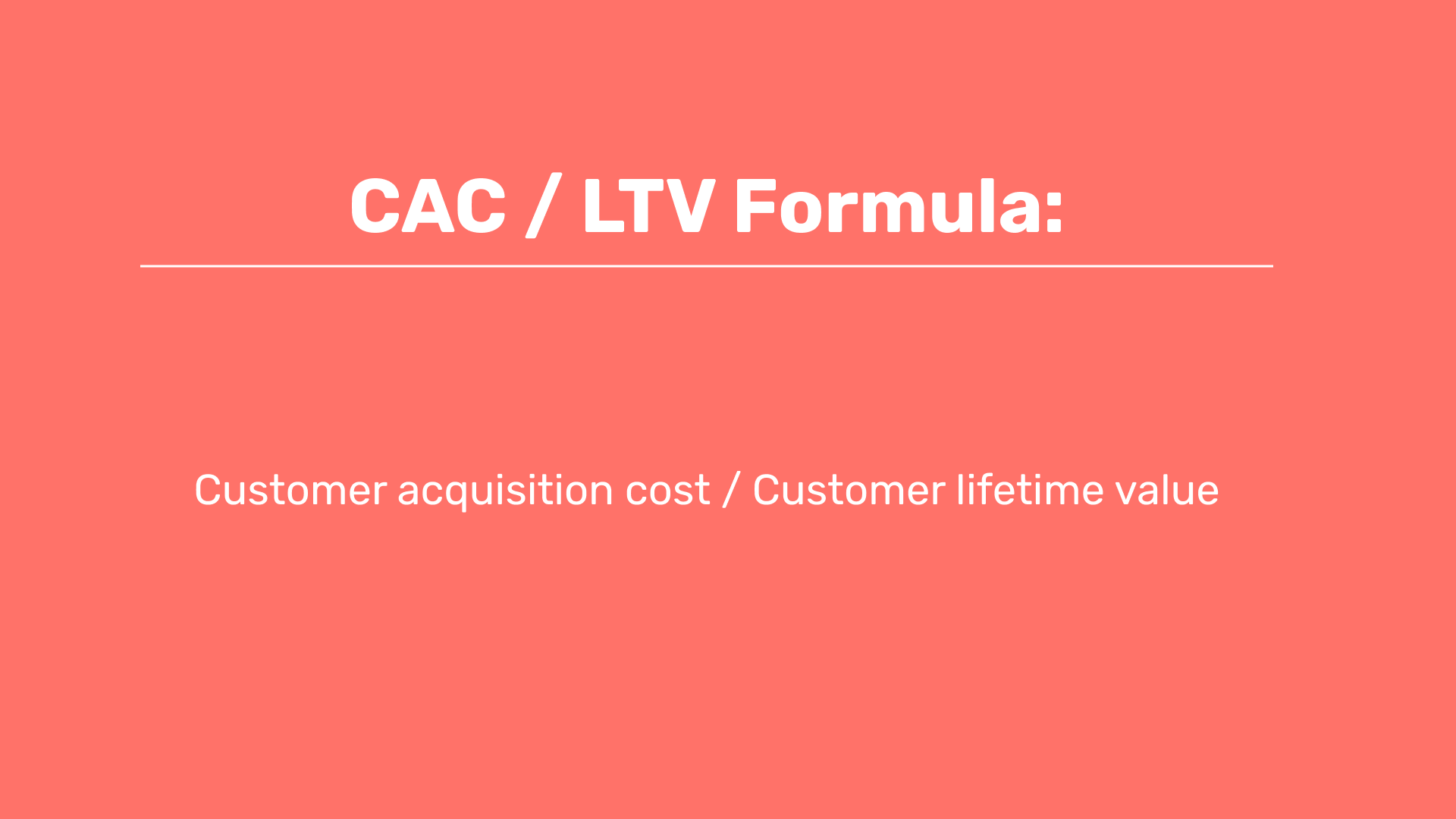
The customer lifetime value-to-customer acquisition cost ratio measures how much money and resources it takes to get a customer. It compares the total amount of money you spend over a given period, such as one month or one year, to get customers compared to the total amount of money those customers will make for your business in their lifetime. This helps you figure out if it is worth spending the money and resources to get more customers.
The LTV-to-CAC (LTV) ratio is calculated by taking the total expected revenue from a customer over their lifetime and dividing the cost of acquiring that customer. This gives you your ratio, which is an indicator of how much money and resources it takes to increase your customer base.
The LTV-to-CAC ratio is an important metric for SaaS businesses because it helps them understand the cost-effectiveness of their customer acquisition strategy. It allows businesses to determine the return on their investment in terms of acquiring customers and to determine the payback period to recoup the costs associated with acquiring a customer.
In other words, it measures how quickly a business can recover its investments in sales and marketing to acquire customers.
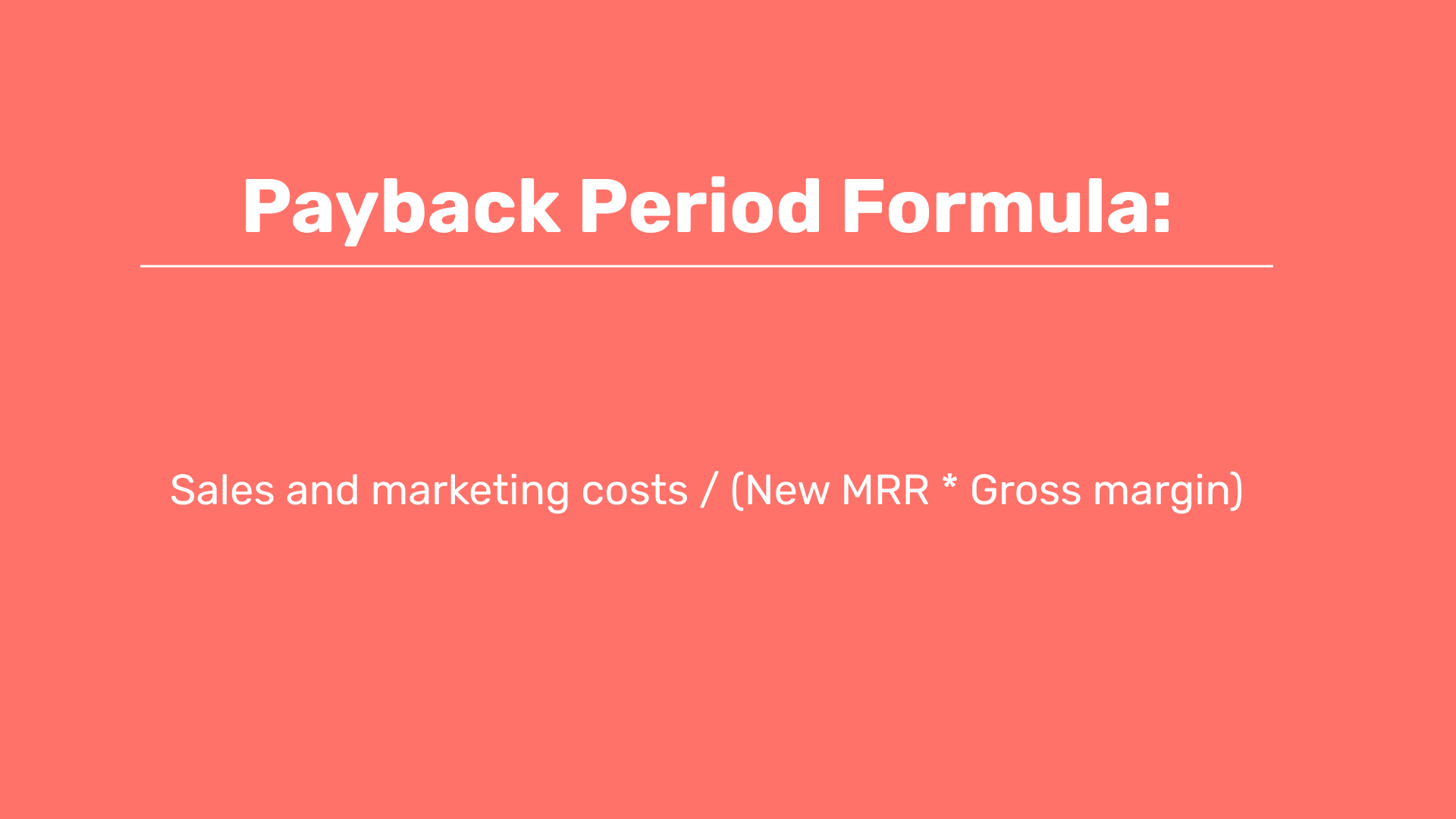
The payback period for Customer Acquisition Cost (CAC) is how long it takes for a business to get back the money that it spends on getting new customers. It measures how quickly a business can recover its investments in sales and marketing to acquire customers.
The payback period for Customer Acquisition Cost (CAC) is calculated by dividing the total cost of customer acquisition by the average monthly revenue per user (ARPU). This calculation will give you the number of months it will take to recoup the cost of acquiring a customer.
The payback period for customer acquisition cost is an important metric for SaaS businesses because it helps them understand the efficiency of their sales and marketing efforts. It allows businesses to determine how quickly they can recoup the money that was spent on acquiring customers and adjust their strategies accordingly.
Tracking this metric over time will help businesses determine if they are spending too much on customer acquisition, or if they have a good return on investment (ROI) from their campaigns.
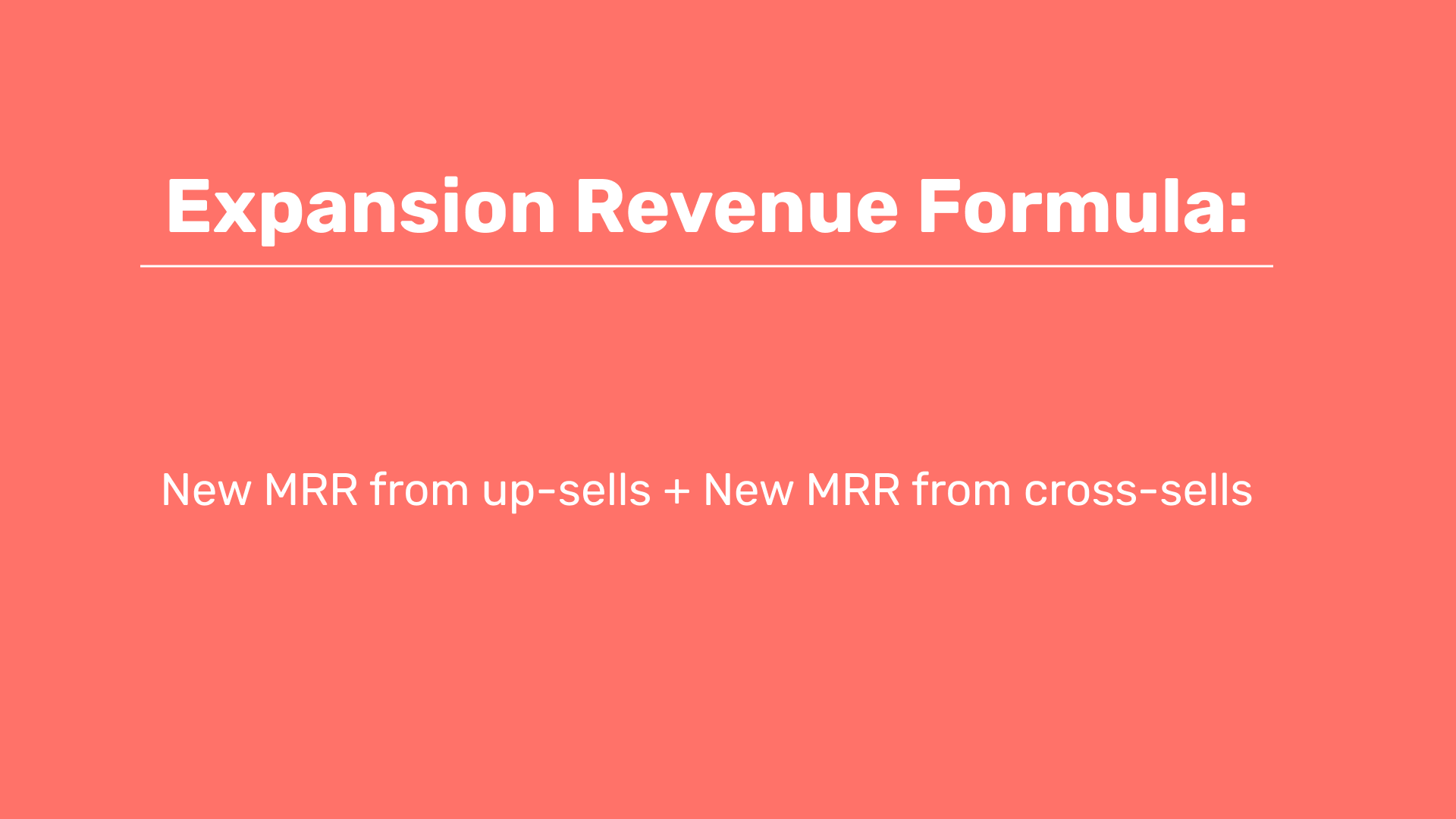
Expansion revenue is a key SaaS metric that measures the amount of revenue generated by existing customers. It typically refers to revenue generated by upselling existing customers on additional products or services, or by charging them more for their current subscription.
Expansion revenue is calculated by taking the total amount of revenue generated from existing customers over a specific period, such as a month or year. This can include revenue generated from up-selling additional products or services, as well as additional charges for current subscriptions. To reach an accurate expansion revenue figure, businesses should also track the number of new customers acquired during that period.
Expansion revenue is an important metric for SaaS businesses because it provides insight into how successful they are in up-selling existing customers. It allows them to see the ROI of their efforts in terms of expanding their customer base and how successful they are at getting customers to pay more for additional products or services.
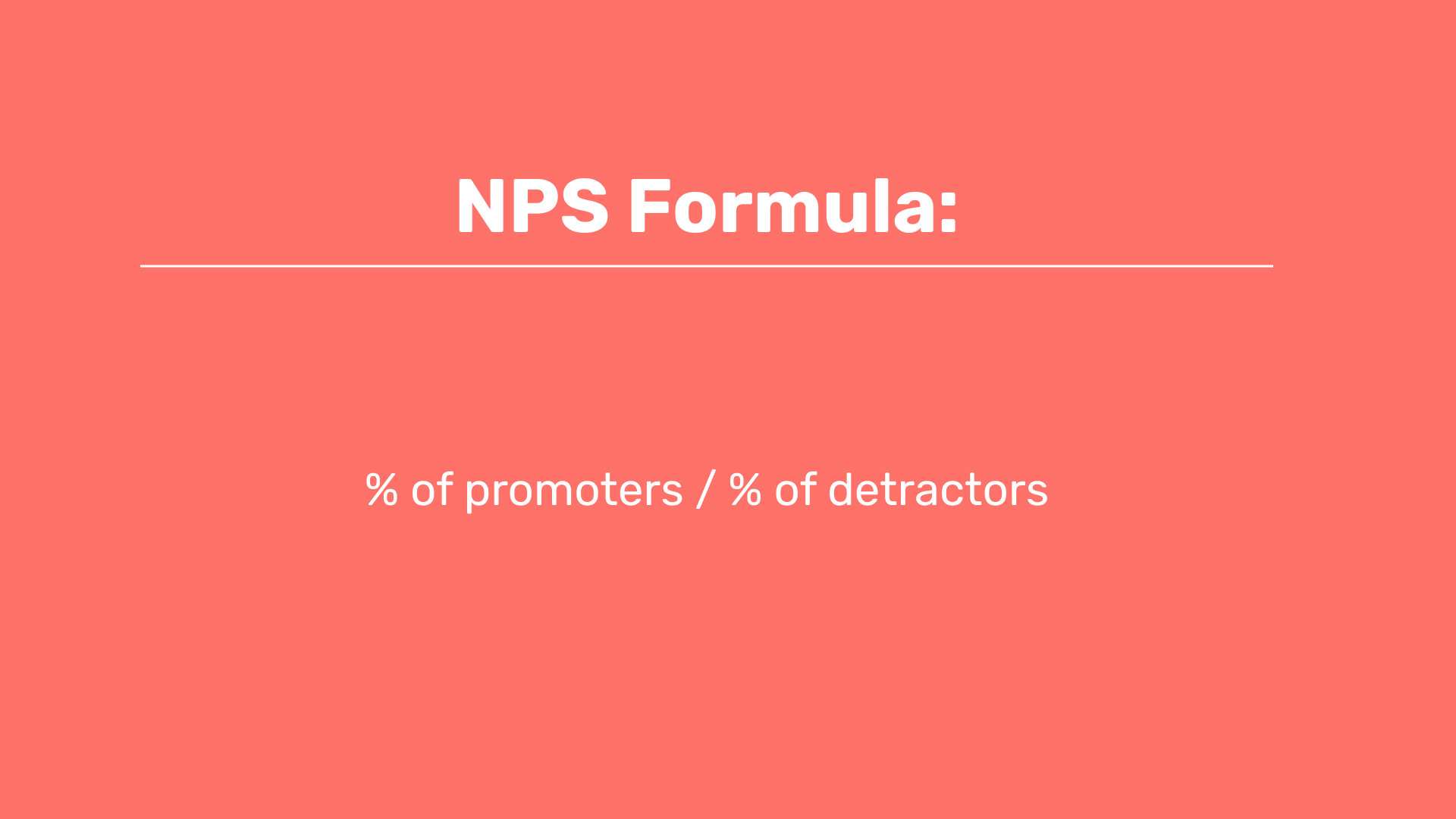
Net Promoter Score (NPS) is a way of measuring how likely customers are to recommend your products or services to their friends and family. It is based on a customer survey where they rate the likelihood of recommending your product or service on a scale from 0-10.
Companies can use this metric to measure the satisfaction, loyalty, and engagement of their customers with their business.
Net Promoter Score (NPS) is calculated by taking the percentage of customers who rate your product or service on a scale from 0-10 as a 9 or 10, and subtracting the percentage of customers who rate it a 6 or lower. This produces a score between -100 and +100, which can be used to gauge the satisfaction of customers and their loyalty.
Companies should track their NPS score over time to determine if they are meeting their customer service goals. Additionally, companies should compare their NPS score with that of their competitors, to get an idea of how their performance stacks up against similar businesses in the industry.
Understanding customer satisfaction and loyalty is essential for any business, but it can be difficult to measure accurately. Most businesses rely on traditional surveys or feedback forms that don’t provide a clear picture of how customers feel about their products and services. This makes it hard to make meaningful improvements in the customer experience.
Net Promoter Score (NPS) provides an easy way to measure customer satisfaction, loyalty, and engagement with your business. It gives you an accurate score between -100 and +100 that allows you to track changes in customer sentiment over time and compare your performance against competitors in the industry.
By using NPS, companies can get a better understanding of how their customers feel about their product or service so they can make informed decisions about how best to improve the customer experience.
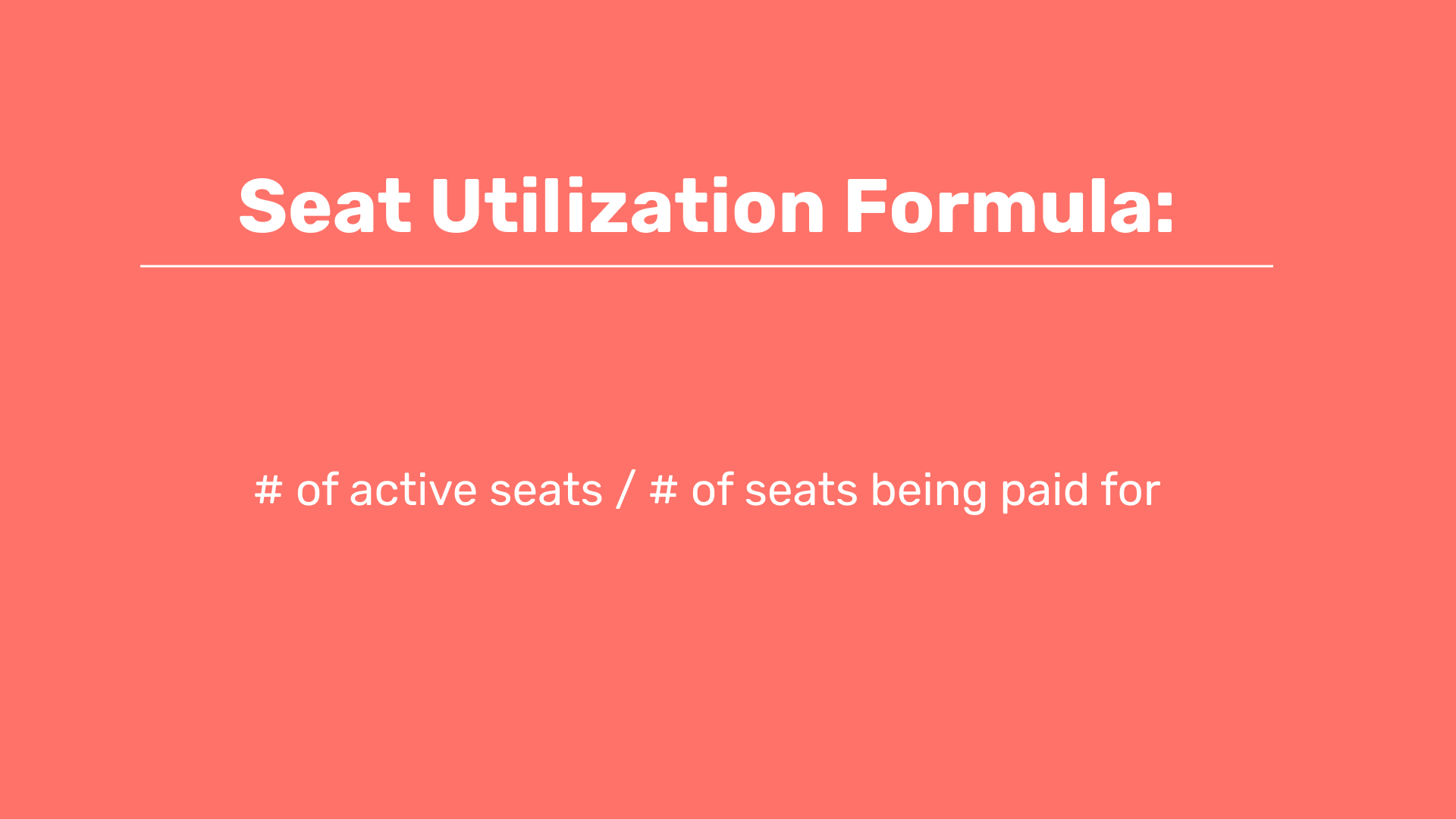
Seat Utilization Rate is a SaaS metric that helps businesses measure how much their customers use their products or services. It measures the percentage of available seats (users) who have logged in over a given period, providing valuable insight into customer engagement and usage patterns. This allows companies to adjust pricing models accordingly and make sure that each user is getting maximum value from the product or service.
Seat Utilization Rate can be calculated by taking the total number of users who have logged into the product or service over a given period, and dividing it by the total number of available seats. This will give you the percentage of available seats being used by customers over that period. It’s important to note that this metric should be tracked.
The Seat Utilization Rate is an important SaaS metric because it allows a SaaS company to measure how much its customers are using their products or services. This metric measures the percentage of available seats (users) who have logged in over a given period, providing valuable insight into customer engagement and usage patterns.
Tracking this metric can help companies identify areas for improvement and adjust pricing models accordingly. Additionally, it helps them ensure that each user is getting maximum value from the product or service by making sure that users are using it. By understanding which customers are using the product regularly and which ones are not, businesses can make better decisions about how to improve their product or service and offer more customized features to meet customer needs.
Overall, the Seat Utilization Rate helps businesses get a better understanding of how their customers interact with their product or service, so they can optimize it accordingly to maximize customer engagement and satisfaction.

It is essential to monitor the health of your software company if you want to guarantee that it grows and thrives. With these 15 important SaaS metrics, you will be able to measure the growth and success of your organization, as well as identify areas in which additional effort needs to be directed.
Taking advantage of all the data available can then help you drive your company in the right direction toward improved results and, ultimately, long-term success. However, remember that each business is different and so should be monitored accordingly; as such take some time to determine and track what SaaS metrics are most relevant for your own business.
Ultimately though, no matter what SaaS metrics you choose, understanding how your software company is performing can considerably improve its overall health.